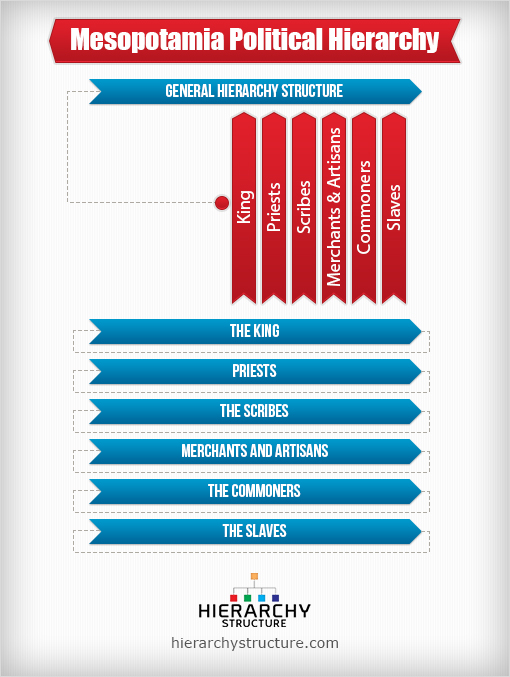The Mesopotamia civilization was situated between the Euphrates and Tigris rivers in ancient times and was a region which was made up of two different sections with varied geographies – Northern Mesopotamia and Southern Mesopotamia. The Mesopotamia political hierarchy was Monarchy based and consisted of three classes including asnobility, free citizens and slaves. The political hierarchy system and structure was complex and to understand it in detail, you can go through the following given information.
General Hierarchy Structure
Mesopotamia region was under the rule of theKing and his family and the other senior or high officials of the civilization included of the nobles,the priests and the military leaders. Next in line came the shop-owners, iron workers, farmers, merchants, craftspeople and fishermen etc. There was also a fourth level of social hierarchy structure during the Mesopotamia times and this was the level occupied by the slaves.
- King
- Priests
- Scribes
- Merchants & Artisans
- Commoners
- Slaves
The King
The King sat on the topmost position and was the leader of the political system of the Mesopotamia civilization. The entire governance, rights and responsibilities were given to the king as well as his family. The king was no less than aliteral god and also served as the head of the army.
Priests
After the king, the class of people that enjoyed the maximum respect, rights and wealth were the priest. The priests belonged to the upper class of the society because religion was important to everyone during those days. In case of any physical problem, mental instability and other such problems, people approached the priest for treatment and cure. Even the King considered priests to hold a lot of importance.
The Scribes
The Scribes too were members of the upper class of the Mesopotamia times and were educated people who worked in a diverse number of professions including army, government and merchants etc. They also worked for the royal family and in the palace because of their skills and knowledge. One needed to go through a proper training program to become a Scribe.
Merchants and Artisans
Merchants as well as artisans were also respected individuals of the Mesopotamia civilization and era. They belonged to the upper class and were very wealthy due to their business skills and knowledge. They were involved in trade, businesses and owned a lot of land. They were known to invent Cuneiform to document the various trade deals. It was the merchants who invented the calendar system.
The Commoners
In the Mesopotamia political system, the commoners belonged to the lower most level and most of this class was involved in farming. They were not educated, not wealthy and didn’t have many rights and privileges as well. While some of them had their own homes, others didn’t but still led a fairly comfortable life.
The Slaves
Slaves were at the bottom of the Mesopotamia political hierarchy and were given no rights. They worked for others such as the merchants, commoners or others from higher classes.

